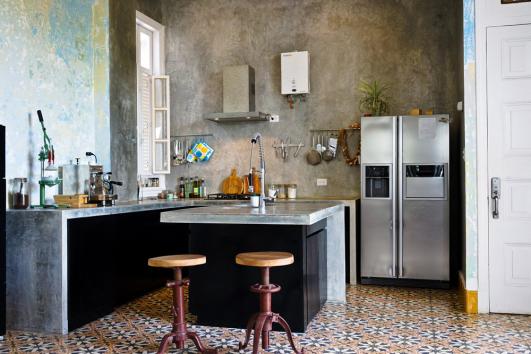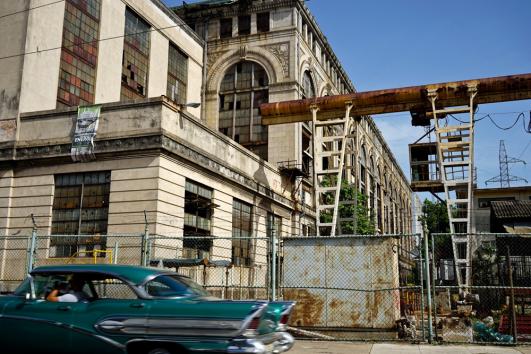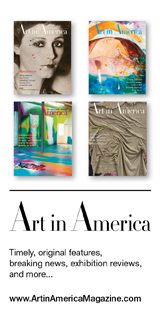How New Laws Are Allowing Architecture to Flourish in Cuba
News From the Web
For decades, Cuba's communist economic system has essentially outlawed all forms of private architectural work. In 2011 though, wide-ranging economic reforms brought a challenge to this status quo. In this article, originally published on Curbed as "In Cuba, Architecture and Design Blossom Under New Laws," Julia Cooke explores how these laws to bring about a more flexible economic system are allowing a different kind of architecture to emerge.

Conceptual artist Wilfredo Prieto's kitchen. He designed the kitchen himself and had it made by local craftspeople. Image Courtesy of Hannah Berkeley Cohen via Curbed
This May, visitors were allowed into Havana's long-defunct Tallapiedra electric plant for the first time since it was shuttered in the 1960s. They could climb the grated stairs to the plant's nave, see how the light glinted off unchipped white and green tiles set in place in 1915, how tiny, stalky trees had grown out of clumps of dirt where machinery once sat, how the high, church-like central space and the split-level, open workspaces on one side might be adapted to any number of uses. The opening—for locals and some of the thousands of tourists in Cuba for the Twelfth Havana Biennial—was the work of Claudia Castillo and Orlando Inclán, and their eight-year-old think tank, Habana Re-Generación.

The defunct Tallapiedra electric plant. Image Courtesy of Hannah Berkeley Cohen via Curbed
When Tallapiedra was constructed in 1915, it was one of the most advanced electric plants of the day, but as technologies changed, its facilities did not. Sometime in the 1960s, it stopped producing electricity, and since then, only the workers at the state-run metal shop on the ground floor—the only reliably safe area of the structure—have had access to it. From the outside, Tallapiedra is giant and fully broken: caved, oxidized gutters sprouting grass from the still-horizontal bits, a solid central nave with perfect, ornate moldings, a sole smokestack hitching up the rest, about ten panels of un-broken glass among its hundreds of window panes. And everyone—Havanans passing by in collective taxis, passengers on the elevated train, sailors on freighters unloading across the bay—has seen bayside Tallapiedra from the outside.
Tallapiedra was hardly the only building newly opened to the public in May. During the Havana Biennial—the massive constellation of art shows that take over the city, in very Cuban fashion, every three years—restaurants that had pushed to open in time were packed, as were in-home B&Bs; artists were opening new studios, and independent art spaces in apartments and exhibits in unusual places were hosting inaugurations and parties. As the architects prepped at Tallapiedra, the five-meter high, deco-inflected gates on the 1940 extension to its 5,000 square meters were propped open until the last worker left, and then, once Castillo and Inclán had concluded their meeting, locked.
Among Habana Re-Generación's first and ongoing projects was an investigation into restoration and regeneration around the bay of Havana and particularly here, amid a cluster of industrial buildings now considered cultural patrimony. It was the sort of academic study, of challenges and prospects for urban growth in Havana, for which the group had been assembled. A decade ago, these buildings were moldering structures whose technologies had rendered them obsolete, doors left closed.
Now they are possibilities. New policies introduced by Raul Castro in 2011 have begun, slowly, to reshape Havana. Amid a raft of reforms were permits for entrepreneurial ventures: Cubans can now legally, privately work as interior decorators, open restaurants and bars, or make and sell, say, tiles or furniture. In tandem with the legalization of private property—Cubans can now purchase and sell apartments and homes without government involvement—these two reforms have spurred a flurry of architectural openings on the ground.
"It presents a unique opportunity, Havana today," said Inclán that May evening. "There are opportunities for the society, for the city, and for architects. Especially the doors that have yet to open. The biennial gives the image of the city that we want to have."
"Tallapiedra was always a center of production. The new Havana that's being made," said Castillo, "should be made here."

At the Tropicana penthouse. Image Courtesy of Hannah Berkeley Cohen via Curbed
Until recently, opportunities for architects in Cuba were scarce. Architects had little chance to practice outside of state jobs, and neither architecture nor industrial design appeared on the list of jobs legally privatized in 2011. No professional occupation was—since the Cuban government provides free university education for doctors, lawyers, accountants, architects, and more, such jobs remained in the public sector. For architects, this meant work in committee, for large state-sanctioned jobs like joint-venture hotels, housing projects, and state-run restaurants.
But in 2011, said Inclán, "a new figure began to appear: the client." The new permits for entrepreneurial ventures meant in-home restaurants, bars, and B&Bs, all design opportunities. Architects responded enthusiastically, if quietly.

Conceptual artist Wilfredo Prieto's apartment. Prieto's work often involves engineering, and he knocked down interior walls but preserved the mottled paint of this space. Image Courtesy of Hannah Berkeley Cohen via Curbed
"In Cuba, we use the term alegal—neither legal nor illegal," said Yoandy Rizo, whose nascent studio practice garnered him a residency at the Vermont Studio Center in 2012. Last year, Rizo and Osmany Abel Garcia Fuentes designed "Entre Fronteras," an architectural intervention at the Queens Museum in New York, using wooden scaffolding to create a space both barbed and cocoon-like.
All over Havana, similar wooden scaffolding surrounds buildings, from Miramar restaurants to Vedado apartments to Old Havana manses. Downtown, where Eusebio Leal's Office of the Historian of the City of Havana has spearheaded a heroic restoration of Old Havana in the last decade, this is not a new sight. What is new is how pervasive such scaffolding is outside of Old Havana, and the fact that architects' plans underlie many projects.

A bathroom in Havana's La Guarida restaurant. Image Courtesy of Hannah Berkeley Cohen via Curbed
"It's a departure from previous years where people thought, 'oh, I'll just hire a builder, I don't need an architect,'" said Kendra Ador Agramonte, who recently moved back to Cuba after nearly fifteen years working in London and Grand Cayman. On return from England, she and her English husband—who met while he was on an exchange at Cuba's architecture school in the nineties—bought and renovated one, and then two, guesthouses in Centro Habana. At their Tropicana penthouse, Bertoia diamond chairs cohabitate with flowery Cuban antiques, and clean-lined custom cabinetry hides an espresso maker and decidedly modern amenities. The results, she says, of such architect-led projects speak for themselves. "People are realizing that in order to get a really nice building you need to have someone involved who knows what they're doing in terms of design."























